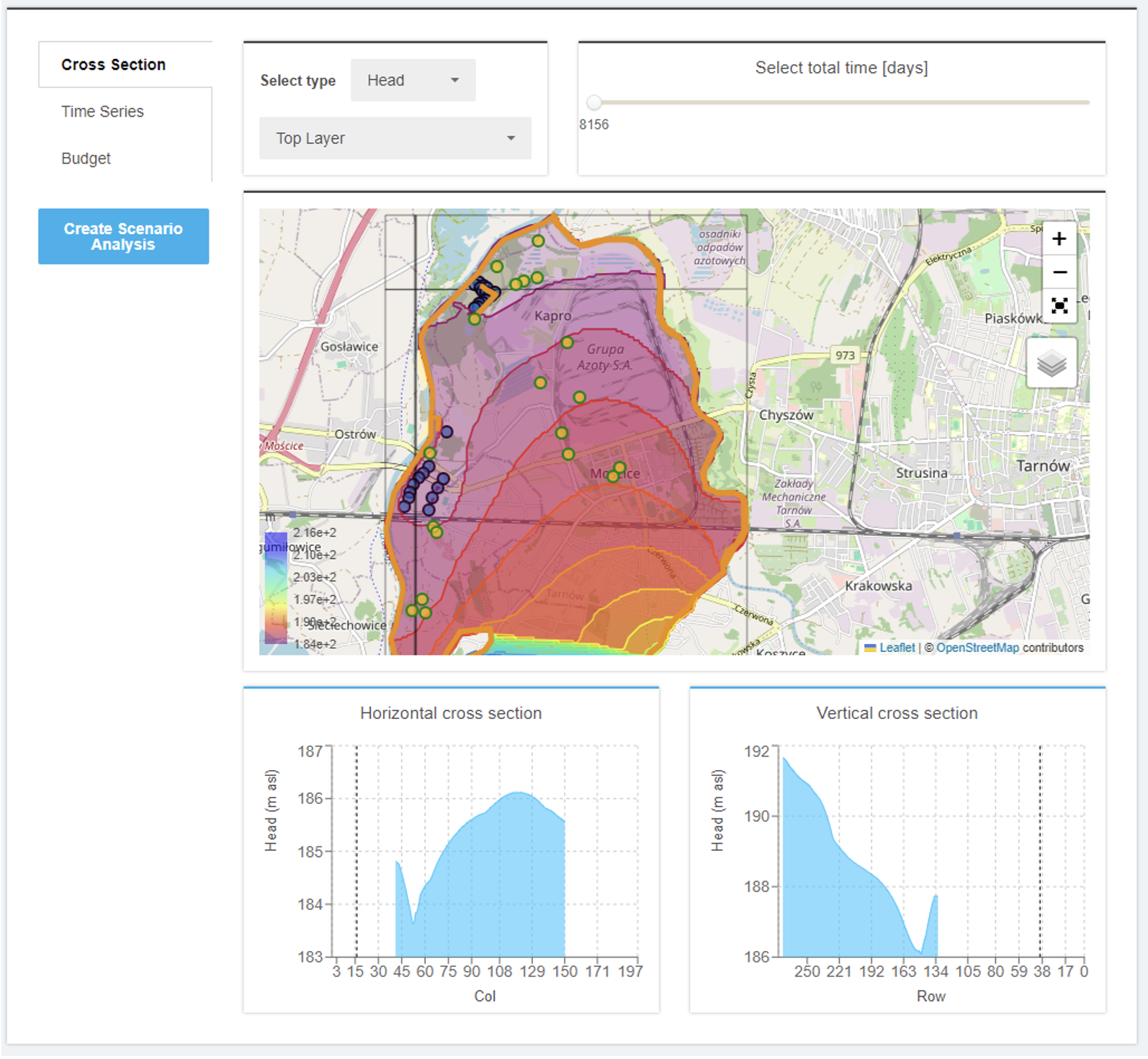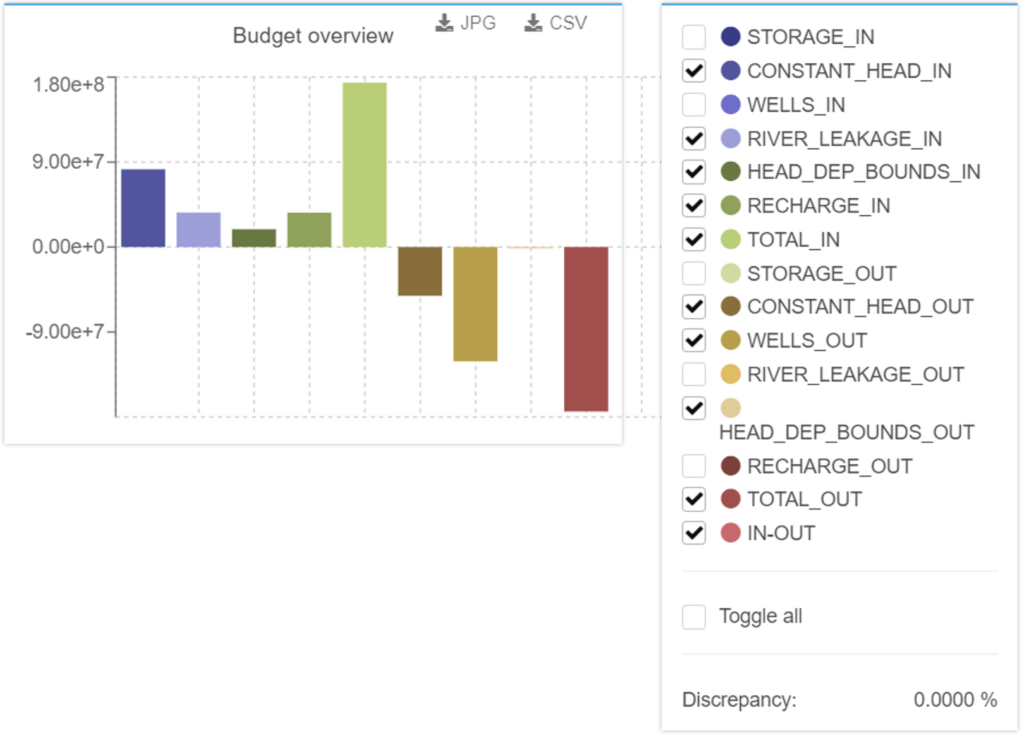Development of a numerical steady-state groundwater flow model to investigate the impact of two different Managed Aquifer Recharge (MAR) schemes on a shallow Quaternary alluvial aquifer system in Tarnów area, southern Poland.
Scope
Impact assessment of two MAR sites: 1) bank filtration site and 2) bank filtration site with infiltration ditches on groundwater flow in shallow Quaternary aquifer.
Location
Tarnów area, southern Poland, along the Dunajec River. See on map.
Conceptual model
- Model area: 15 km2 divided into 277 rows 198 columns, cell size of 20 x 20 m
- Stratigraphy of model layers determined based on data from over 150 bore-logs
- Groundwater extraction by means of 26 pumping wells, located at 3 major well sites along the Dunajec River, a total average abstraction rate 17 000 m3/d
- Groundwater recharge estimated based on results from the SWAT model
- Three infiltration ditches with a total length of approx. 450 m
- Model calibration against the hydraulic head, m 20 observation wells
Simulation scenarios
The groundwater flow model represents the average groundwater heads in part of the Dunajec catchment and shows the extent of the depression cone caused by pumping operations at well sites.
Model results
The simulated hydraulic head distribution shows a good fit to the measured groundwater table in observation wells. The results of the calibrated model were used to construct predictive scenarios to analyse the aquifer’s sensitivity to changes in pumping rates. The use of infiltration ditches at one of the well fields effectively reduces the groundwater depression cone. Such a hydrodynamic scenario also helps to reduce the inflow from the industrial zone.


Authors
Sławomir Sitek
University of Silesia in Katowice, Poland
Acknowledgement
The model was developed during the 3-month research visit at the TU Dresden, Institute of Groundwater Management, INOWAS group. The research activities were financed by the funds granted under the Research Excellence Initiative of the University of Silesia in Katowice.
